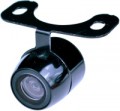Sensor type
The technology by which the matrix is made is the photosensitive element of the camera.
—
CMOS. Also known as CMOS; both of these entries are abbreviations of the same term, only in different languages (English and Russian). Without going into details, it is worth saying that CMOS matrices are notable for their low cost, compactness, good image processing speed and low power consumption, however, due to the design features, they are prone to the appearance of noise in the image, and therefore somewhat lose CCD in terms of image quality.
—
CCD. CCD-type matrices (CCDs) are somewhat more complicated and more expensive than CMOS, but they provide better image quality, including in low light conditions — in particular, due to the low level of noise. This is due both to the low level of heating during operation, and to the uniform light sensitivity of each pixel (whereas in CMOS it can “walk” a little).
—
HCCD. A variant of the CCD technology described above, featuring improved sensitivity and even better picture quality in low light.
Sensor size
The physical size of the photosensitive element of a camera. It is usually measured diagonally and is indicated in inches — more precisely, fractional parts of an inch. The larger the sensor, the larger the size of each individual dot (pixel) on it, the more light enters each pixel, and the easier it is to ensure high image quality with a minimum of noise (especially when it comes to shooting at dusk). However you need to remember that only matrices of the same type and resolution can be compared with each other in size. And a large sensor is not always a guarantee of quality — a lot depends on the rest of the hardware of the camera, the quality of its installation and other factors. However, the large size of the sensor usually indicates a high class camera.
Video resolution
The resolution of the frame taken by the camera in video mode, in pixels — in other words, the size of the picture in dots horizontally (first digit) and vertically (second digit). It should be taken into account here that in the case of reversing cameras, the recording in pixels describes only the frame on the camera matrix itself; to describe the "picture" coming to the connected screen, the designation in television lines (TVL) is used. This is due to the fact that the video signal is transmitted in an analogue format; See Video Resolution below for more on all of this. Here we note that with the same resolution in TVL and the same viewing angles, a camera with a higher resolution in pixels will produce a clearer, more detailed image. But
HD reversing cameras, and even more so
Full HD units.
Video resolution (TVL)
Although modern electronics are dominated by digital standards, car reversing cameras still use an analogue signal transmission format. This is due to compatibility requirements: such video allows you to use fairly simple screens. And although its quality loses to digital, it is quite enough for most of the tasks facing this class of auto electronics.
An analogue video signal has a size in horizontal and vertical dots. But since the number of vertical dots has a strictly defined number of 625 (in the PAL and NTSC colour system), resolution is usually indicated only by the number of horizontal dots (TV lines).
In fact, this parameter describes the quality of the image that is displayed directly on the screen connected to the camera. There are models with a value of
480,
500,
520,
540,
560 TVL and even
higher resolution in TVL. This is important for models with wide viewing angles (see below). On the other hand, in order to use all the features of a camera with numerous TV lines, a screen corresponding to these features is also required; For more details on compatibility with the screen, see specialized sources.
Сolour encoding system
The colour system refers to the format in which colour information is transmitted in an analogue video signal. In modern reversing cameras, the European PAL system or the American NTSC are most often used. It makes no sense to describe them in detail — suffice it to say that for the normal operation of the camera you need a radio tape recorder (or other device with a screen on which the image is displayed) with support for the same colour system. However, incompatibility in this parameter is not fatal — with such a connection, the image will only turn from colour to black and white (in extreme cases, its overall quality will slightly deteriorate).
Signal-to-noise ratio
This parameter describes the total amount of interference in the video output from the camera. The higher the signal-to-noise ratio (that is, the ratio of the useful signal level to the level of extraneous interference) — the better the image will be, the less distortion it will have. The minimum level for modern cameras is considered to be 40 dB — with it, the “picture” is reproduced with minor noise that does not significantly affect its perception. And in the most advanced models, this figure can reach 48 – 50 dB — such an image for the human eye is almost indistinguishable from the perfect one.
Of course, in fact, the quality of the image also depends on the capabilities of the screen on which it is displayed, however, even the best screen will not save a “noisy” camera.

